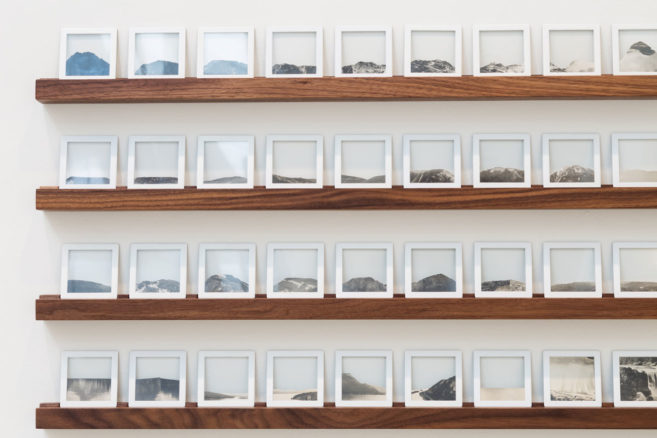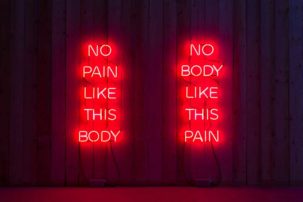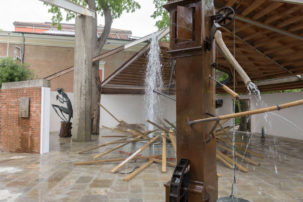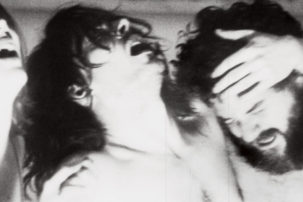The Venice Biennale, one of the world’s largest art events in terms of profile, media coverage and international attendance—opens in the historic island city on May 13, with media previews starting a few days before that on May 9. And, notably, 2017 is shaping up to become one of Canada’s most significant years yet in terms of presence at the event; here are nine promising projects involving Canadian artists and curators that are on view.
Watch our website and social-media feeds for more details on these projects in the weeks to come.
1. Geoffrey Farmer at the Canada Pavilion
The Louvre in Paris, the Tate Modern in London, Documenta in Kassel—and now, finally, the Canada Pavilion in the Venice Biennale’s Giardini. With his sensitive, intelligent approach to issues of art, history and material—and his strong international exhibition history—Vancouverite Geoffrey Farmer has the potential to turn the Canada Pavilion, often considered a difficult space, into an immersive, sculptural experience. Advance information has revealed that personal history and intergenerational trauma will be aspects of Farmer’s installation—as well as poetry, old magazines and a family mystery. Not to be missed.
2. Kananginak Pootoogook at the Arsenale
In a groundbreaking moment for Inuit art worldwide, this year marks the first time that the work of an Inuit artist is being included in the Venice Biennale’s headlining exhibition. The name of that show this year is “Viva Arte Viva,” curated by Centre Pompidou’s Christine Macel, and the Inuit artist being honoured is Kananginak Pootoogook (1935–2010), a community leader and creator in Cape Dorset from the 1950s through to the end of his lifetime. Ten coloured-pencil drawings by Pootoogook will be installed in what Macel is calling the “Pavilion of the Earth” alongside works by Slovenian artistic collective OHO, Japanese artistic collective THE PLAY, and UNESCO Artist for Peace Marko Pogancnik. It all promises to shed fresh light—and renewed attention—on Pootoogook’s closely observed views of contemporary Inuit life.
3. Hajra Waheed at the Central Pavilion
Outside of the Canadians with solo exhibitions in national pavilions, recent Sobey Art Award finalist Hajra Waheed has arguably received the most real estate of any Canadian in Venice this year. A space dedicated to the Montreal artist’s work is destined for a portion of curator Christine Marcel’s Central Pavilion component of “Viva Arte Viva,” next to American painter McArthur Binion and Syrian painter Marwan. Waheed works in a range of media, from video installations to collage, and her works are often ongoing, iterative pieces rather than discrete works. She has exhibited in a number of biennials, including the Gwangju Biennale and the Biennale de Montréal, and galleries including BALTIC Center for Contemporary Art, the Darling Foundry and Kunstsaele Berlin.
4. Lani Maestro at the Philippines Pavilion
Although Lani Maestro, in 2012, won the Ottawa-based Hnatyshyn Foundation’s prestigious Visual Art Award—an award that has also gone to Kent Monkman, Rebecca Belmore and (yes) Geoffrey Farmer—she is relatively low-profile in Canada at this point in time. Perhaps this is due, in part, to Maestro’s commitment to an ideal of practice that is, in her words, “independent”— as “critical” and “social as it is simultaneously wild and sensual.” Yet Maestro’s talent and influence should not be underestimated—she has exhibited at the Sharjah Biennial, the Busan Biennial and the Istanbul Biennial, among other major international events, and she taught for years at Concordia University and NSCAD University after arriving in Canada from the Philippines at the age of 25. Curator Joselina Cruz is putting Maestro’s works in dialogue with those of painter Manuel Ocampo, offering the potential to spark fresh conversations near and far around Maestro’s art as well.
5. Mike Bourscheid at the Luxembourg Pavilion
Casts, reliefs, performances, videos and…cookie-making. Yes, you can expect to see it all—plus some hand-dyed silk pajamas—in Vancouver-based artist Mike Bourscheid’s exhibition “Thank You So Much for the Flowers” at the Luxembourg Pavilion. Bourscheid comes by the domestic references honestly here—this particular pavilion is in a rented space usually used as an apartment. And his past trajectory of creating gender-bending costumery and actions will no doubt add to the drama and decor on hand. Raised in a working-class family in Luxembourg’s industrial south, and relocated to Canada after meeting his Vancouver-based partner at art school in Berlin, Bourscheid has an imaginative, hands-on approach that deconstructs social norms with wit and flair. (Nota bene: some of the pieces may have come direct from humble artist-run centre residencies in Canada, as well.)
6. Jeremy Shaw at the Arsenale
Berlin-based, North Vancouver–born artist Jeremy Shaw, who won the most recent Sobey Art Award, will have work in the portion of the Arsenale named the Dionysian Pavilion—an appropriate inclusion, given Shaw’s past work investigating the mind-altering states of drugs, fervent religious convictions and more. In his musical work as Circlesquare, Shaw released a 2009 album titled “Songs About Dancing and Drugs,” and his visual art has included projects like the video installation DMT, which visualizes the experiences of his friends under the influence of the titular hallucinogen. In Venice, Shaw’s art will be installed alongside that of a range of artists, including Kader Attia and Jelili Atiku.
7. Evan Penny at the Chiesa di San Samuele
A new series of work by the internationally popular Toronto-based sculptor, whose careful and often confounding pieces replicate and distort human figures in combinations of pigmented silicone, resin and hair, will be on view in “Ask Your Body” at an historic church in Venice, the Chiesa di San Samuele, during the run of the Biennale. And while Penny’s trademarks of uncanny detail and surprising distortion can be depended upon, the show also marks new ground: a venture into the realm of the art-historical. The exhibition is premised on surprising experiential reactions, which will undoubtedly be heightened by the setting—a darkened church in one of art history’s epicentres.
8. Jon Rafman, Skawennati and Pippin Barr at the HyperPavilion
Spread over three warehouses on the northern side of the Arsenale, the HyperPavilion is a new addition to the Biennale that focuses on art in the digital age, ranging from video installations and virtual reality to holograms and projections. Well-known Montreal artist Jon Rafman will be included in the exhibition, while NT2 Laboratory, a research collective based at the Université du Québec à Montréal, will be presenting an online exhibition including work by fellow Montreal-based artists Skawennati and Pippin Barr.
9. Lou Sheppard at the Antarctic Pavilion
Fresh off the heels of winning the Emerging Atlantic Canada Artist Residency from the Banff Centre and the Hnatyshyn Foundation, Halifax-based artist Lou Sheppard is heading to Venice to show a sound installation, Requiem for the Antarctic Coast, that was initially created for the first Antarctic Biennale. For it, Sheppard translated the shape of the coastline of the Antarctic Peninsula into a composition for piano and strings by overlaying satellite imagery with a grid representing a musical staff, and working from there to offer an alternative, more poetic, method for learning about a landscape under threat. Sheppard’s work will be presented alongside other projects from the Antarctic Biennale at the Antarctic Pavilion.
To stay abreast of Canadian Art’s latest updates from the Venice Biennale, follow us on Facebook, Twitter and Instagram.

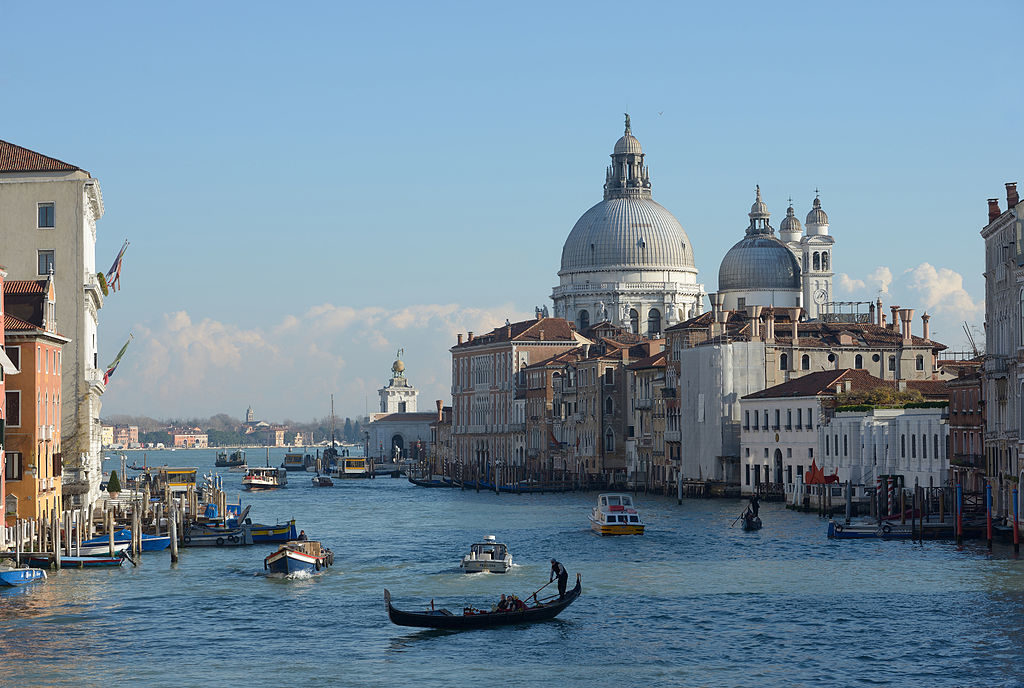 A view of the Grand Canal in Venice. Photo: Wolfgang Moroder
A view of the Grand Canal in Venice. Photo: Wolfgang Moroder 